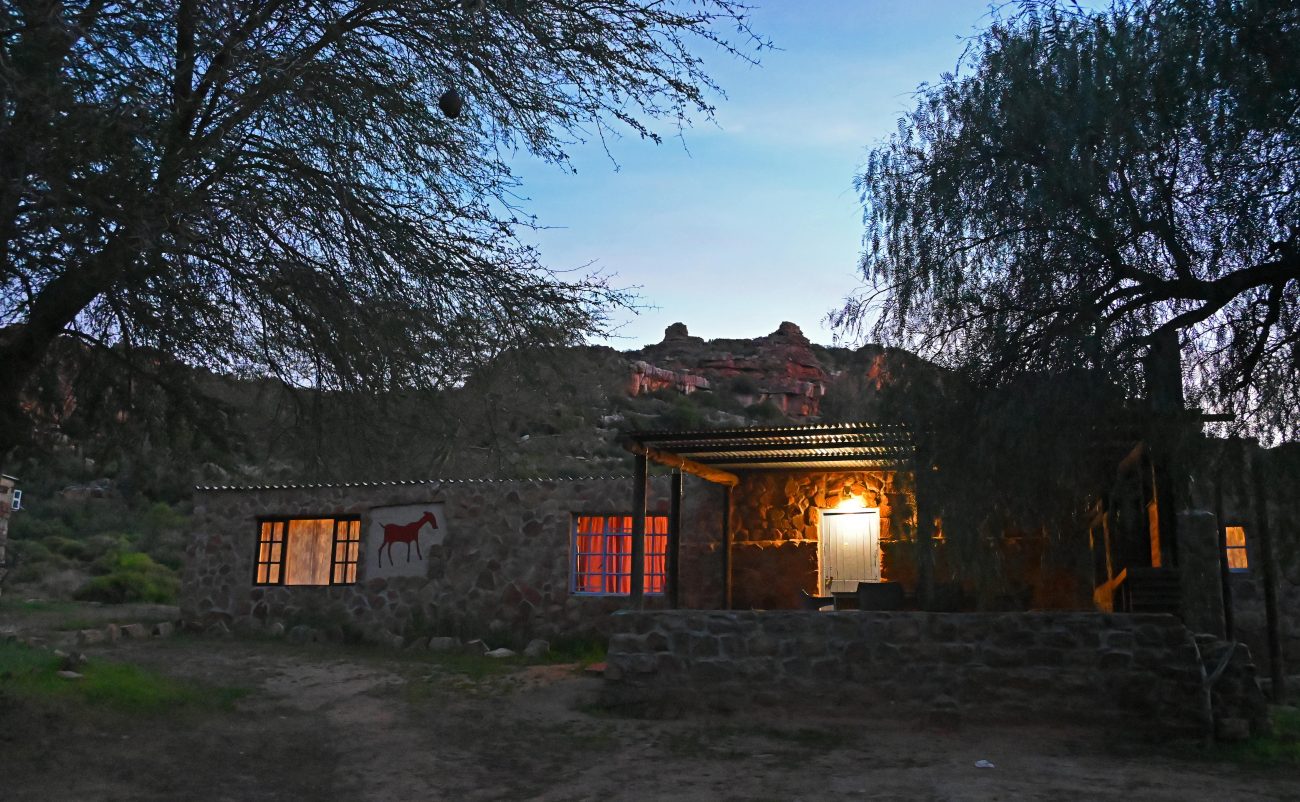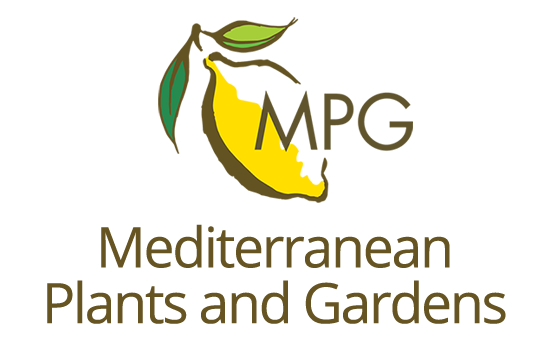Day 9 – Friday 22 August
Cederberg Mountains
We would spend two nights at Traveller’s Rest in the stunning Cederberg Mountains. The nearby Rocklands area is an internationally renowned climbing and bouldering destination, famous for its orange sandstone boulders.
We stayed in scattered rustic cottages in the valley of the Brandewynrivier. We were amused by the sign inside ours which requested to keep doors and windows locked because baboons “come in and mess and break everything!”. Dinners were served in the restaurant and farm stall building and we enjoyed springbok pie and malva pudding, a traditional sponge desert.
We began the day walking the Sevilla Trail which explores a number of rock paintings by the San. The San are the direct descendants of the first Homo sapiens and lived in this area as hunter-gatherers for millennia. Painted using earth ochres, clay, ash and bird droppings as pigments most paintings are likely to be 1600 to 2000 years old, although could be significantly older. There are also those that illustrate activities from the past 300 years such as sailing ships, trekker wagons, people on horseback and battles with the Xhosa people.
It was interesting to see examples of plants growing in particular conditions. For example, Crassula umbella in the shade of overhanging rocks, Chasmanthe floribunda amongst boulders on shady sides of rocky outcrops and Melasphaerulea graminea in moist conditions, often in the shade of larger plants.

Our cottage at Traveller’s Rest

Ornithogalum maculatum

Albuca suaveolens

Lachenalia nardousbergensis

Crassula umbella

Chasmanthe floribunda

Melasphaerula graminea

Gladiolus orchidiflorus

Western rock skinks, Trachylepis sulcata

Rock art including dancers and extinct quagga

View of the Brandewynrivier from the Sevilla Trail
After lunch we travelled eastwards to the Biedouw Valley, which is one of the centres of rooibos tea growing and a popular place to see large masses of spring flowers. Interesting geophytes include cormous Cyanella alba subsp. flavescens which only grows in this valley. Frank was surprised to see another field further up the valley, usually full of blue Heliophila had already gone over, much earlier than usual. The landscape was still breathtaking.

Looking down into the Biedouw Valley

Flower carpets including peach Moraea miniata

Cyanella alba subsp. flavescens

The southern side of the Biedouw Valley, looking towards the Tra Tra Mountains
Our route there and back was on the Pakhuis Pass and we stopped by ‘The Englishman’s Grave’, of Lieutenant Graham Clowes who died in action in 1901, during the Anglo-Boer War. Up at this elevation we saw plants of the Fynbos biome.

Gomphocarpus cancellatus

Phyllica rigidifolia

